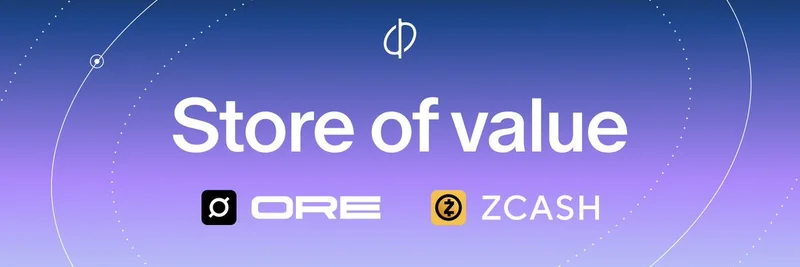In the ever-volatile world of crypto, bear markets aren't just about weathering the storm—they're prime time for leveling up your knowledge. Recently, Haseeb Qureshi, managing partner at Dragonfly Capital, dropped a gem on X with his all-time tier list of crypto white papers and academic papers. If you're deep into meme tokens, understanding these foundational reads can give you an edge, as many memes thrive on platforms like Ethereum and Uniswap. Let's break it down, with links to the originals for easy diving.
Haseeb's list is structured like a video game tier system: S for god-tier must-reads, down to C for still-solid but less essential. He kicked it off in response to someone seeking bear market recommendations, emphasizing brushing up on crypto basics. Here's the rundown:
S-Tier: The Absolute Classics
These are the heavy hitters that shaped the industry. Start here if you're new or revisiting.
- Bitcoin (2008): Satoshi Nakamoto's groundbreaking paper on peer-to-peer electronic cash. It's the blueprint for all blockchain tech, including the chains where meme tokens like Dogecoin first exploded.
- Ethereum (2014): Vitalik Buterin's vision for a programmable blockchain. Ethereum is home to countless meme tokens—think Shiba Inu or PEPE—thanks to its smart contract capabilities.
- Augur (2015): A decentralized prediction market platform. This one highlights early ideas in oracles and betting, which echo in today's meme-driven gambling dApps.
- Flash Boys 2.0 (2019): Explores frontrunning and transaction reordering in DEXes. Crucial for understanding MEV (maximal extractable value), which affects meme token trades on platforms like Uniswap.
- Truebit (2017): A scalable verification solution for blockchains. It's the origin of many crypto mechanics, influencing off-chain computations that could optimize meme token launches.
- Uniswap v2 (2019): The core of automated market makers (AMMs). Uniswap revolutionized DEX trading, making it easy to swap meme tokens without centralized exchanges.
- Uniswap v3 (2021): Builds on v2 with concentrated liquidity. If you've ever provided liquidity for a meme pair, this is why it's more efficient.
- Zerocash (2014): The foundation for privacy-focused coins like Zcash. Privacy tools are increasingly relevant in meme communities wary of on-chain tracking.
A-Tier: Strong Contenders
Solid reads that dive deeper into scaling, stability, and ecosystems.
- Avalanche Consensus (2018): A high-throughput consensus protocol. Avalanche hosts some fast-paced meme ecosystems with low fees.
- Cosmos (2017): The "Internet of Blockchains" vision. Cosmos enables interoperability, which could connect meme tokens across chains.
- Constant Function Market Makers (2021): Discusses privacy in AMMs. This ties into how DEXes like Uniswap handle trades securely, vital for meme volatility.
- Eigenlayer (2023): Introduces restaking for pooled security. It's reshaping DeFi, indirectly boosting liquidity for meme tokens.
- MakerDAO (2017): The stablecoin system behind DAI. Stability is key when meme markets crash—DAI often serves as a safe haven.
- Tornado Cash (2019): Privacy mixing for Ethereum. Though controversial, it's a staple for anonymous meme token transactions.
B-Tier: Worth Your Time
These cover scaling solutions and networks that support broader crypto activity.
- Arbitrum (2018): Scalable smart contracts via optimistic rollups. Arbitrum is a popular layer-2 for cheap meme token deploys.
- Lightning Network (2016): Bitcoin's layer-2 for fast payments. While not meme-focused, it inspires similar scaling for Bitcoin-based tokens.
- Filecoin (2017): Decentralized storage. Useful for storing meme art or NFTs tied to token projects.
- HotStuff (2018): A BFT consensus protocol. Influences modern blockchains like those in the Solana ecosystem, home to many memes.
C-Tier: Niche but Notable
Good for specific interests, like protocols and functions.
- 0x Protocol (2017): An open standard for DEX trading. It powers relayers that facilitate meme swaps.
- The DAO (2016): Early experiment in decentralized governance. Lessons from its hack inform today's meme DAOs.
- Verifiable Delay Functions (2018): Tools for time-locked computations. Relevant for fair launches in meme token lotteries.
Haseeb also shouted out some honorable mentions in replies: Groth16 (2016) and PLONK (2019) for ZKP fans, EIP-1559 (2019) for Ethereum's fee mechanics, and Block-STM (2022) for parallel execution.
The thread sparked discussions, with folks like Vance Spencer noting the MakerDAO inclusion and others suggesting adds like EIP-1559. One reply even hyped the reborn Truebit Verify for tokenized assets. Check out the original thread on X for more takes.
Why does this matter for meme token insiders? Meme coins aren't just hype—they're built on these tech stacks. Understanding Uniswap helps you spot rug pulls, while Ethereum's basics explain gas fees during pumps. In a bear market, arming yourself with this knowledge turns downtime into an opportunity to build smarter strategies. What's your favorite from the list? Drop your thoughts below.



